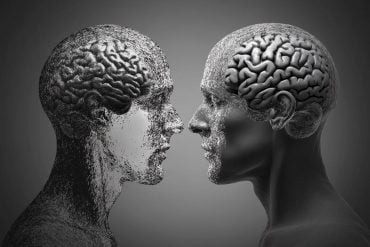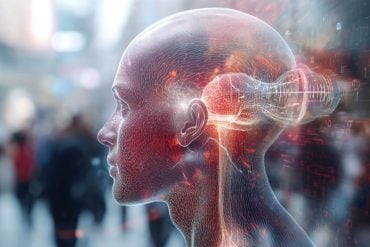Summary: Researchers unlocked new aspects of the complex gut-brain connection using a vibrating capsule ingested by participants. This unique methodology allowed researchers to directly measure neural responses during gastrointestinal stimulation.
Their findings revealed that participants could accurately sense the capsule’s stimulation, leading to the discovery of “gastric evoked potential” – a late neural response triggered by the stimulation.
These findings are a significant step forward in understanding the gut-brain connection and hold promising clinical implications, especially for conditions such as eating disorders and irritable bowel syndrome.
Key Facts:
- The study introduced a novel approach to exploring the gut-brain connection using a vibrating capsule developed by Vibrant Ltd. to stimulate the gastrointestinal tract.
- Researchers discovered the “gastric evoked potential,” a late neural response in the brain induced by the capsule’s stimulation, offering a new way to understand gut-brain interaction.
- The methodology and results could transform the clinical approach to disorders of gut-brain interaction, providing a tool for assessing gut sensation and paving the way for more personalized treatment strategies.
Source: Laureate Institute for Brain Research
A pioneering study conducted by researchers at the Laureate Institute for Brain Research (LIBR) in Tulsa, Okla., has made significant strides in understanding the elusive gut-brain connection, a complex relationship that has long puzzled scientists due to the difficulty of accessing the body’s interior.
The study, “Parieto-occipital ERP indicators of gut mechanosensation in humans,” appears in the peer-reviewed scientific journal Nature Communications.
The research team successfully had participants swallow a minimally invasive vibrating capsule to measure neural responses during gastrointestinal stimulation, providing a novel approach to study this intricate connection.
The capsule was developed by Vibrant Ltd. Participants in the study included healthy adult male and female volunteers ages 18-40. The researchers found that the volunteers were able to sense the stimulation of the vibrating capsule under two conditions: normal and enhanced.
The enhanced stimulation condition led to improved perceptual accuracy, faster detection of the stimulation, and reduced variability in reaction time, indicating potential for studying this method in different clinical populations.
This is a significant breakthrough as it demonstrates the feasibility of this novel approach to studying gut feelings.
The researchers also discovered the “gastric evoked potential,” a late neural response in certain areas of the brain specifically induced by capsule stimulation. These neural responses increased in amplitude depending on the intensity of the stimulation and were significantly correlated with perceptual accuracy.
This discovery provides a new way to measure and understand the neural processes governing the gut-brain connection.
“We were able to localize most of the capsule stimulations to the gastroduodenal segments of the digestive tract using abdominal X-ray imaging,” said Dr. Sahib Khalsa, a psychiatrist and neuroscientist at LIBR, and senior author of the study.
“This finding is crucial as it provides a more precise understanding of where these gut-brain interactions are originating.”
“The potential clinical implications for the results of this study are substantial,” said Dr. Khalsa.
“The vibrating capsule method could transform the clinical approach to disorders of gut-brain interaction, including eating disorders and certain gastrointestinal disorders such as irritable bowel syndrome (IBS) or functional dyspepsia.”
Dr. Khalsa continued. “This would provide a much-needed tool for assessing gut sensation in these conditions and could lead to more personalized and effective treatment strategies. It also opens up the possibility of identifying perceptual or biological mediators of successful treatment, which could serve as predictive markers for future therapeutic interventions.”
The research team was led by senior author Sahib Khalsa, MD, PhD, Director of Clinical Operations at the Laureate Institute for Brain Research and Associate Professor in the Oxley College of Health Sciences at The University of Tulsa. Co-first authors on the study were Ahmad Mayeli, PhD and Obada Al Zoubi, PhD who were a PhD student and postdoctoral scholar, respectively, from LIBR at the start of the project.
Funding: The research was supported by the National Institute of Mental Health and The William K. Warren Foundation and was conducted at LIBR between September 2019 and February 2022.
About this neuroscience research news
Author: Aimee Mehl
Source: Laureate Institute for Brain Research
Contact: Aimee Mehl – Laureate Institute for Brain Research
Image: The image is credited to Neuroscience News
Original Research: Open access.
“Parieto-occipital ERP indicators of gut mechanosensation in humans” by Sahib Khalsa et al. Nature Communications
Abstract
Parieto-occipital ERP indicators of gut mechanosensation in humans
Understanding the neural processes governing the human gut-brain connection has been challenging due to the inaccessibility of the body’s interior.
Here, we investigated neural responses to gastrointestinal sensation using a minimally invasive mechanosensory probe by quantifying brain, stomach, and perceptual responses following the ingestion of a vibrating capsule.
Participants successfully perceived capsule stimulation under two vibration conditions (normal and enhanced), as evidenced by above chance accuracy scores. Perceptual accuracy improved significantly during the enhanced relative to normal stimulation, which was associated with faster stimulation detection and reduced reaction time variability.
Capsule stimulation induced late neural responses in parieto-occipital electrodes near the midline.
Moreover, these ‘gastric evoked potentials’ showed intensity-dependent increases in amplitude and were significantly correlated with perceptual accuracy.
Our results replicated in a separate experiment, and abdominal X-ray imaging localized most capsule stimulations to the gastroduodenal segments.
Combined with our prior observation that a Bayesian model is capable of estimating computational parameters of gut-brain mechanosensation, these findings highlight a unique form of enterically-focused sensory monitoring within the human brain, with implications for understanding gut feelings and gut-brain interactions in healthy and clinical populations.







